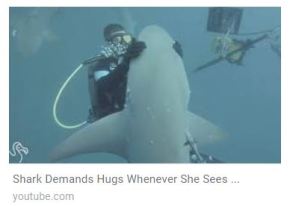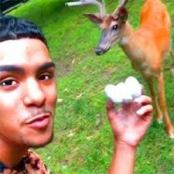Scuba diving is a vital part of working with marine life, becoming a diver at an aquarium is a good step towards earning more experience in the field! Answering some questions about working as a diver for an aquarium is Shelby and our friend Jesse. Jesse is one of my coworkers at the Sea Life aquarium & Shelby is one of the divers for the North Carolina aquarium at Fort Fisher!
- Describe a day in this job.
Jesse:
Arrive at work and check up on coworkers, prep gear because safety is paramount and then dive with all our amazing animals at Sea Life! All while educating our guests with our education team. Between dives the dive team relaxes and bonds. We finish the day with equipment cleaning, showers, and mopping the ocean overlook.
Shelby:
My days are pretty brief because it’s only one dive. I go in and set all my gear up, change into a wet suit, and hop in the water. I usually do some cleaning and try to have some cute guest interactions at the windows- giving high fives and playing games, and then I try and move all the sand around back to where it should be and clean the algae off the walls where it builds up. After 30 minutes the show diver will finish up, we surface, rinse and put away our gear, shower, and head home!
- What qualifications did you need?
Jesse:
Rescue diver certification, knowledge of marine life, and prowess of scuba diving
Shelby:
For my aquarium they only required an Open Water certification and a swim test!
- What’s the most challenging part of the job?
Jesse:
Trying to find new ways to convey information to guests in an interesting and entertaining way
Shelby:
Being cautious of the animals. I can’t tell you how many times I’ve accidentally kicked a fish!
- What made you want to pursue this position?
Jesse:
My goal is to become a marine biologist and I felt this position would provide good diving experience. Also the slight raise to help ease the burden of my student loan debt. 🙂
Shelby:
It’s a great platform to use as an educator. Divers are interesting people and the public is most likely to listen to me if I’m in the water than if I’m on dry land.
- Has this position changed how you view the animals in the aquarium or animals in general?
Jesse:
I feel a lot closer to many of the animals in our aquarium.
Shelby:
Not really but that’s only because I had worked as an educator prior and sort of knew my way around the field already.
- What characteristics should someone have to be successful in this role?
Jesse:
A love for diving, the want to always improve, and the curiosity to continue learning
Shelby:
I think to do anything in the animal field you have to be passionate to a point of not being able to envision yourself doing anything else at all. The field is so competitive that you need to be versatile and willing to learn and constantly improve.
- Where do you want this job to take you in the future?
Jesse:
Hopefully through connections and experience, some job that is more hands on with wildlife and diving. Maybe something doing surveys? Hopefully something ecological overall!
Shelby:
Diving is good for experience for any marine related field but for me specifically, I’d like to do research diving and coral restoration work.
- Do you have any funny or embarrassing stories you’re ok with sharing?
Jesse:
I’ve been scared by our dog faced puffer fish on multiple occasions. I’m just floating there, super calm then I turn my head to the right and he’s literally inches from my mask. Just floating out of my vision!
Shelby:
One of my first dives I used fins that were too big and they fell off during my dive. I sat down on the bottom and the entire show crowd watched as my buddy put my fins back my feet for me.
Thanks again for reading, and as always, if you have any questions don’t be afraid to ask!
-Jenney






 For example, animals like sting rays and sharks will often avoid scuba divers because they see divers as an unfamiliar organism and potential predator, so they will often swim away. When sharks do swim near scuba divers it is often in an area where scuba diving is a common activity, so the sharks in the area might have grown accustomed to divers in the water and have learned that we mean them no harm. In some situations, this is taken a step further and the sharks will come right up to divers because in the past many other divers have fed them, so now the sharks have a positive association with scuba divers and have been completely desensitized to people.I’m sure that you can see where this can go wrong. A kid falls off a boat in the same waters. The sharks see a person and think it’s time to be fed and the kid gets bitten. The people are up in arms and kill the shark. This continues until the shark population is greatly hindered and it becomes a modern day Jaws. This entire situation could be avoided if the divers never started feeding the sharks and habituating them to humans.
For example, animals like sting rays and sharks will often avoid scuba divers because they see divers as an unfamiliar organism and potential predator, so they will often swim away. When sharks do swim near scuba divers it is often in an area where scuba diving is a common activity, so the sharks in the area might have grown accustomed to divers in the water and have learned that we mean them no harm. In some situations, this is taken a step further and the sharks will come right up to divers because in the past many other divers have fed them, so now the sharks have a positive association with scuba divers and have been completely desensitized to people.I’m sure that you can see where this can go wrong. A kid falls off a boat in the same waters. The sharks see a person and think it’s time to be fed and the kid gets bitten. The people are up in arms and kill the shark. This continues until the shark population is greatly hindered and it becomes a modern day Jaws. This entire situation could be avoided if the divers never started feeding the sharks and habituating them to humans.
